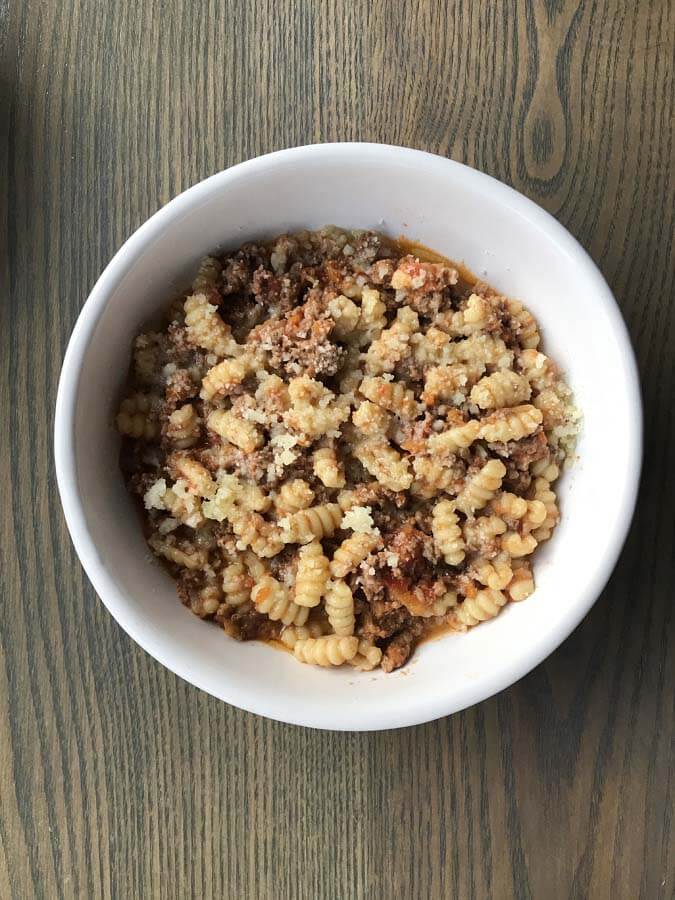I’ll never forget the story of my parents dining at the uber-luxe Little Palm Island in the Florida Keys for some milestone romantic dinner. Their server confidently proclaimed that the special was accompanied by harry-cots (rhyming with pots) verts (rhyming with Burts). They were stunned by the absolute butchering of the poor French green bean, haricots verts … especially in a four-star dining setting. But waiters, chefs, and diners alike are forced to tackle many mouthfuls of words on a menu before we turn to the mouthfuls of food. If you often fudge your way through properly pronouncing certain menu items, or you’ve never really taken the time to learn how to say Worcestershire, read on!
A seasoned server for more than 12 years, Lily Coleman has worked in some of the country’s top restaurants coast-to-coast: Brasserie Ten Ten in Boulder, CO; Michael Mina and Cotogna in San Francisco, CA; The Spotted Pig in New York City; and Henrietta Red and lou. in Nashville, TN. “I worked at Cotogna for almost six years, and with all of the Italian [on their menu], I joked that my main job was that of a translator,” Lily says through a smile. “I would try to preempt difficult-to-pronounce words by including them in my opening to guests and laugh alongside them. Other times I’d pretend I hadn’t heard them say anything wrong.”

When it comes to trying to pronounce unfamiliar words, Josh Bell of Nicky’s Coal Fired in Nashville, TN, fully endorses going for it, even if you are unsure. “Some people shy away from trying to pronounce the confusing words, but it’s surprising how many shoot their shot and go for it,” he says.
Josh finds that some diners are perplexed by certain words like focaccia (fuh-KAH-chee-ah), bolognese (boh-loh-NYEH-zeh), and giardiniera (jar-din-AIR-ah). “I have heard every pronunciation you can think of, but my favorite was when someone really put the bologna in bolognese,” Josh says.
If you truly don’t know a word or how to say it, ask your server — it’s just food, so don’t stress!

Some of Lily’s favorite mistakes pertain to wine. “For example, Chianti is made up primarily of the grape Sangiovese. Guests will gravitate toward either word depending on their comfort level,” she says. “They’ll say San-gee-oh-veese.” (The correct pronunciation is SAN-joe-veh-zuh.) “And if that failed, they go for Chianti, but often pronounce it Chee-auntie.” (It’s KEE-ahn-tee.) “Barbera is another grape that’s sometimes ordered like your Aunt Barbara.” (That one is bar-BAY-rah.)
People also tend to overcomplicate words or accent syllables to make them fancier. “Quince — Cotogna’s three-star Michelin counterpart — people would pronounce like the Spanish word for 15,” Lily says. A quince is a golden-yellow fruit, and it simply rhymes with the word wince … not keen-say.
“As a server, you never correct the guest, but neither do you adopt their pronunciation,” she adds. “Whenever I repeat the order back, I simply pronounce that word correctly and without making a stink of it — maybe they learn a bit, or maybe not.”
In addition to Lily’s and Josh’s commonly heard blunders, there are plenty more where those came from. Here are 14 menu items you’ve likely seen but may be mispronouncing:
Haricots verts — “ah-ree-koh VERH”
In French, the word for bean is haricot, and the word for green is vert. Is haricots verts just a gourmet way of saying “green beans”? Basically, yes. But the French ones are often thinner than American varieties and have a tangy, more intense flavor. The main rule of thumb for this one: Don’t pronounce the leading H.
Crudités — “KREW-dee-tay”
These crunchy assorted raw vegetables often served alongside dipping sauces as an appetizer are not pronounced to rhyme with bite. Give it a little French flair and impress your guests or server.
Gnocchi — “NYUH-kee”
Remember Curly from The Three Stooges and his “nyuk nyuk nyuk” tagline? Keep that in mind when you see this on a menu, and you’ll nail ordering these delicious little pasta-like potato pillows. The gn makes a nyuh sound much like the ñ in piñata or jalapeño.
Maraschino — “MAR-uh-SKEE-noh”
If you want to make an Italian person very cranky, pronounce the “chino” part of this cherry liqueur as you would the relaxed-fit khaki pants, or say “she-no.” We will see this Italian rule many times to come. It’s the Maraschino cherry on top of your Italian pronunciation sundae!
Bruschetta — “bruce-KAY-tuh”
While plenty of people pronounce it “brush-etta,” the proper Italian pronunciation of the ch is, again, a hard k sound, even with the s attached. Oh, how we love this toasty tomato and olive-oil snack.

Gyro — “YEE-roh”
This one might come as a surprise, as it’s mispronounced in a dozen ways. JAI-row is probably the most common way of mispronouncing the popular Greek dish. But ye mustn’t pronounce that first letter as either a G or a J.
Hors d’oeuvre — “or-DERV”
No, this is not pronounced “horse divorce” or “horse-doo-vreez” as many jokesters on the internet so hilariously say. The bite-sized savory dish that typically kicks off a meal deserves a little more finesse. Spelling it can actually be harder than saying it.
Bouillabaisse — “BOO-yuh-base”
Don’t pronounce the Ls in this seafood delicacy from southern France. Bouillabaisse calls for many different types of fish, as it was traditionally made with whatever the fishermen hadn’t sold that morning. Booyah!
Charcuterie — “shar-KOO-tuh-ree”
The first consonant sound here is not char… give it a soft shhh sound, and you’ll be one step closer to the perfect board of meats, cheeses, breads and other accouterments.
RELATED: How to Build the Perfect Charcuterie Board in 4 Easy Steps
Espresso — “ehs-PRES-oh”
Italy’s favorite form of caffeine does not have an “x” in it. Regardless, many Americans say expresso. If you’re thinking, “Who would ever say expresso?!”… just wait. You’ll start noticing it all the time now. Despite espresso’s ability to make you express-clean your house, leave X out this pronunciation once and for all.
Worcestershire — “WOOS-ter-sher”
Although it might be easier to ask your waiter or stockist in the grocery store for “that sauce no one can pronounce,” there are plenty of helpful tricks to learn this vinegar-based savory-sweet-tangy sauce. If woos-ter-sher isn’t working, try wuh-stir-sure or wust-assure.
Meritage (wine) — rhymes with “heritage”
Many people try to French-ify the name of the relatively new red wine and add the -ahhhj sound at the end, but really it just rhymes with heritage. In the late 1980s, a group of American vintners joined forces to create a name for New World wines blended in the Bordeaux tradition. The word Meritage was selected from more than 6,000 entries in an international contest (source).
Phở — “fuh”
The intricacy of the Vietnamese diphthong is tough to grasp. However, phở is not pronounced foe. Say duh, and you’re headed in the right direction towards this delicious Vietnamese broth and rice noodle dish.
‘Nduja — “en-DOO-ya”
This spicy, spreadable salami has popped up on the trendiest menus in recent years. But it strikes fear in the heart of any non-Calabrian who attempts to order it. If that nd combination wasn’t hard enough, there’s that strange apostrophe as well.
RELATED: Apostrophes: Are You Over- Or Underusing Them?
In the end, delicious food is delicious food no matter how it’s pronounced. Certain dialects and parts of the world might say these words slightly differently, but at least we are eliminating a few common faux pas.
And for the final course, we’ve called on StyleBlueprint’s own multi-linguist, Jenna Bratcher, to correctly pronounce (in an appropriately Americanized accent) the troublesome words mentioned in this article. Enjoy and bon appétit (Bohn-app-ay-tee)!
**********
Give your inbox the Southern makeover it deserves! Subscribe to our daily emails HERE!



















